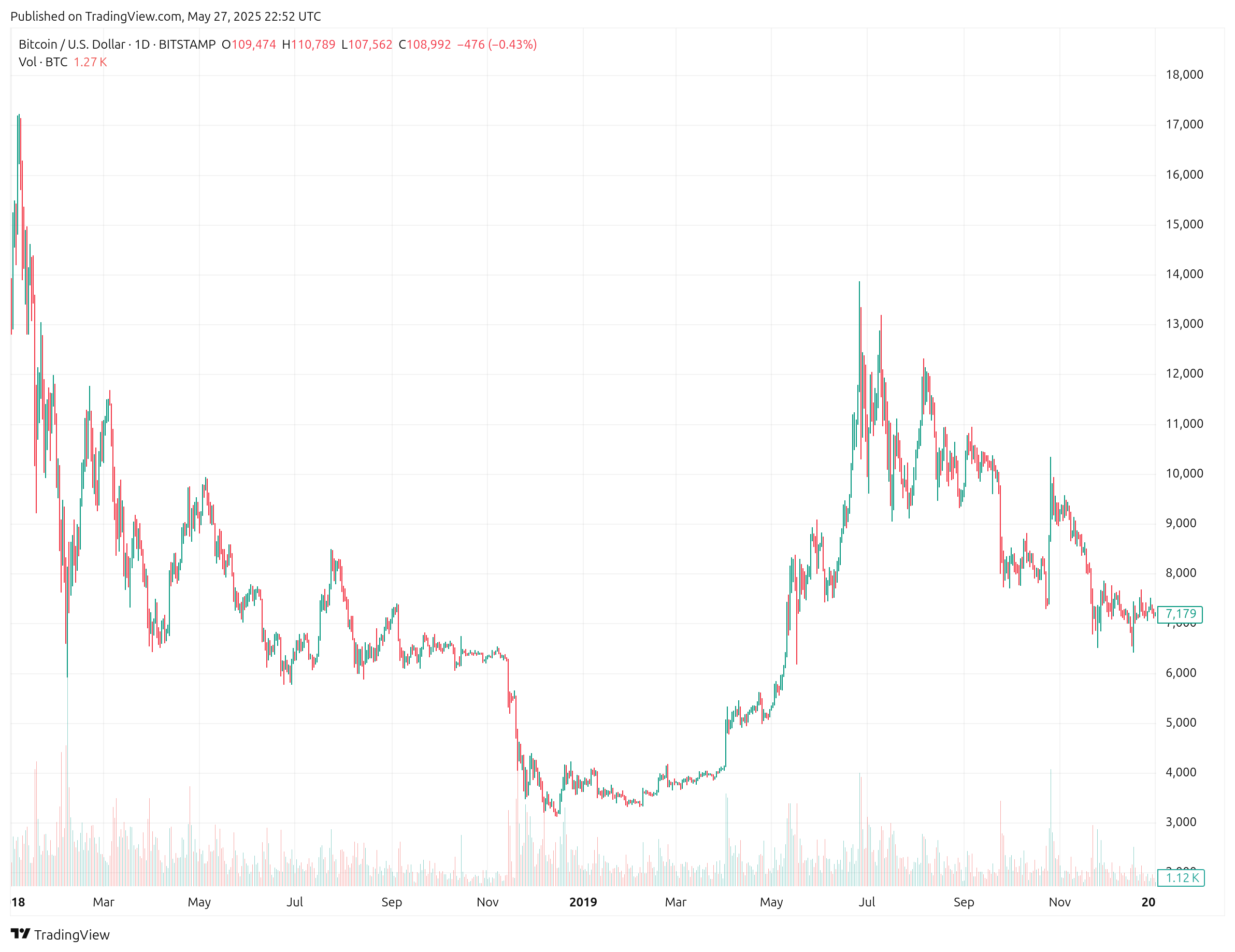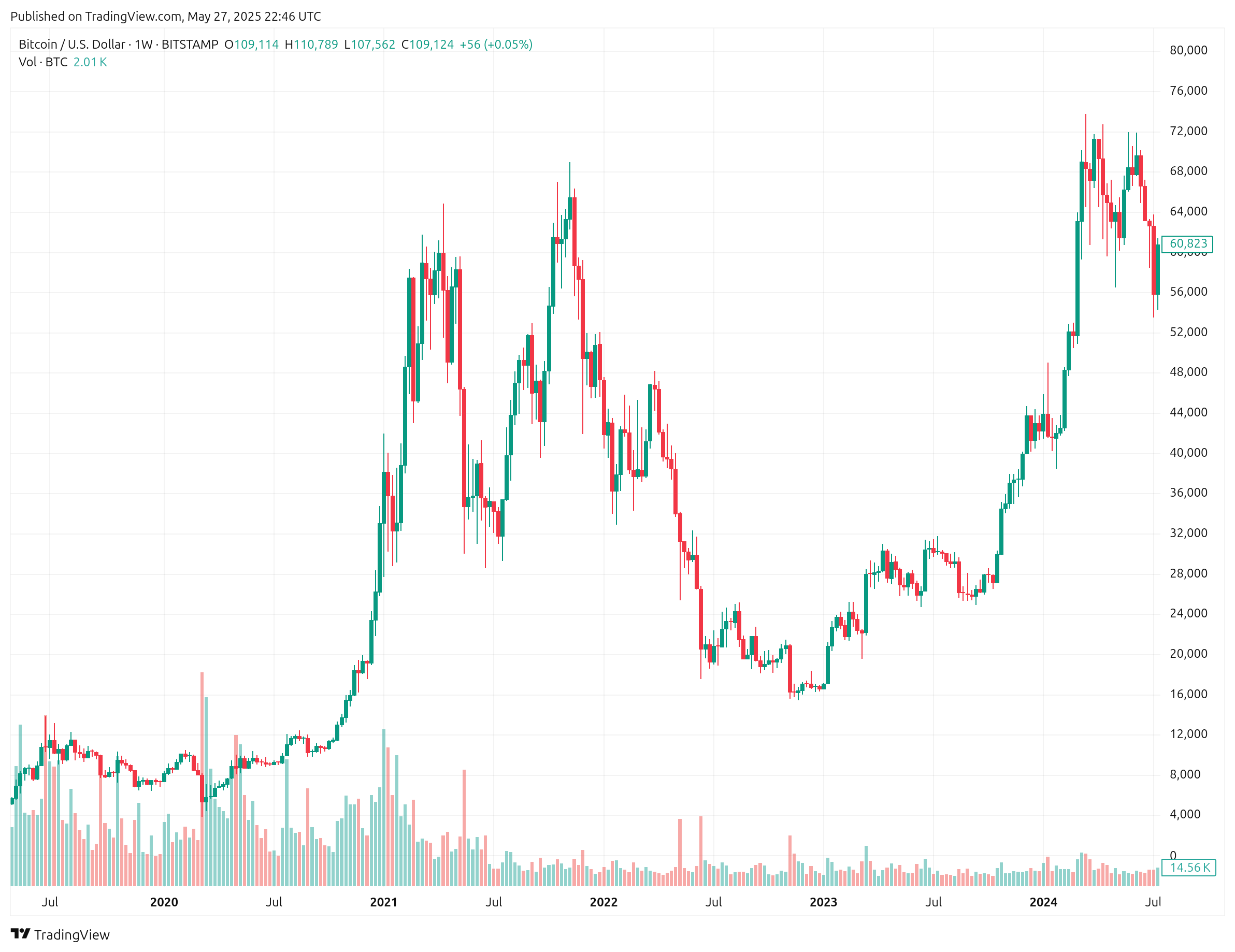My Bitcoin-backed Mortgage

An Article by:
Matt Luongo, CEO
Date:
May 27, 2025
In 2014, I was convinced Bitcoin was the key to a new, alternative circular economy — an economy free from central control, related but detached from the rest of the world. An economy that would grow, waiting for the world to call on it.
I still believe Bitcoin will power this new economy. But my years building Fold hammered home a deep truth: BTC’s role, particularly in life's biggest decisions, won’t be limited to spending. While some holders today are still happy to spend their BTC, most I know fundamentally see Bitcoin as a store of value. It’s the asset you earn, stack, and save. But as your savings in BTC grow, the desire to part with it for everyday purchases, or even big ones, shrinks. Why would you spend the best money you’ve ever had? Wrestling with that question became central to building our family's life.
Our growing family
After our first child was born, my wife and I decided it was time to buy a house.
Cash was tight. We'd been living lean for years: think side hustles, ramen dinners, meager angel investments, and truly saintly patience from my partner. Every spare dollar I had, I used to buy BTC. Selling that stack felt wrong, deeply wrong. Every satoshi felt precious. But I needed to grow up, and take care of my family — and we needed a practical solution.
I could provide for my family’s immediate need for a home, or I could protect our long-term financial future buy stacking bitcoin. So began a seven-year obsession: How could we finance our home using Bitcoin, without giving up access to a counter-party or our exposure to future gains?
Note: This is my personal journey, not a financial playbook. The mechanisms are cool, I think, but they might not be suitable for everyone. Also, I’ve seriously simplified the numbers for storytelling and privacy. Please, do your own research!
First attempt (2018)
Late 2018. Our second child was on the way. We'd moved from the sunny south Bay Area to the East Coast. We figured our outdoorsy California lifestyle meant a small condo would suffice. We were optimistic new parents.
I'd been stashing our savings in BTC for a few years, so while my traditional credit wasn't great, I hoped our holdings could be used as additional collateral.
After hearing this, our realtor introduced us to a "Bitcoin-friendly” lender. When I met her, she smiled reassuringly, "Just sell your BTC, wait 30 days, then come back. I'll pretend I don't know where it came from. Yahtzee!"
I was floored. That wasn’t "Bitcoin-friendly"; that was a complete misunderstanding of everything I was trying to achieve.
Needless to say, in 2018, the idea of a true Bitcoin-collateralized loan from a traditional lender was a pipe dream. So, I did what I had to: raided our meager USD savings, called in favors with family, and scraped a down payment together—painfully parting with dollars we wished were still BTC. Here’s a rough breakdown of the purchase:
- Value of home at purchase: $200k
- Down payment: $50k
- Mortgage size: $150k
- Mortgage rate: 4.5%
And, for context, here was the BTC price of the next few years.

Second Attempt (2020)
Fast forward to 2020. The world was upside down. COVID lockdowns with small children in an 800 sq. ft. condo? We couldn’t catch a break. Something had to change. The Bitcoin landscape had also shifted. I was deep in the trenches building tBTC, trying to bridge Bitcoin to the burgeoning world of DeFi, but it wasn't live yet. What had exploded was the world of centralized crypto lending. Celsius, BlockFi, Nexo – you name it, there was a desk ready to give you a loan against your BTC.
I just couldn’t stomach it. The thought of handing over our family’s Bitcoin savings to one of these entities was revolting. My gut screamed no. And that intuition, as we all now know with the benefit of hindsight, turned out to be a lifesaver. So, we bit the bullet again. Our income had improved, thankfully. Between fresh USD savings (fiat that should have been BTC) and the proceeds from selling that first condo, we pulled together $150k for a down payment on a more spacious house.
Here’s where we were at:
- Appreciation of first home (sold 2020): $50k
- Appreciation of that initial $50k downpayment if it had stayed in BTC (2018-2020): Easily an additional $100k+ (conservative estimate given BTC's run)
- Price of new home: $550k
- New down payment (USD): $150k
- Mortgage size: $400k
- New mortgage rate: 3.25% (those sweet, sweet 2020 rates!)

The price of Bitcoin from 2020 to 2024.
Third attempt (2024)
This time, everything finally aligned. A house down the street opened suddenly, demanding quick action—something traditional finance struggled to deliver. My financial situation had improved, but I was determined to avoid selling bitcoin.
This time, using tBTC allowed me rapid access to credit, secured against my BTC, maintaining exposure to future upside without the centralize custodial risk.
Home price: $950k
Down payment: $500k (BTC-backed credit via tBTC)
Mortgage: $450k at 6.5%
Finally, we'd minimized trade-offs and protected our Bitcoin holdings. The obsession paid off.
Using a decentralized protocol, we could use our Bitcoin as collateral, onchain, without selling it. No handing over keys, no hoping a custodian would stay solvent. This was it.
- Appreciation of second home (estimated at 2024): ~$200k
- Appreciation of that $150k second downpayment if it had stayed in BTC (2020-2024): This is where the numbers get truly eye-watering. That $150k, if left in Bitcoin, would likely have been worth upwards of $1.8 million. Not a typo.
- Price of new home: $950k
- New down payment (primarily via BTC-backed loan): $500k
- New mortgage rate (blended, considering the DeFi loan): ~6.5%
The outcome
Missing the ability to use Bitcoin-backed financing in earlier years came at an immense opportunity cost. However, our experience showed that holding onto our Bitcoin and leveraging it, rather than selling, was an powerful financial strategy.
Let’s hammer this home. What if I’d just caved and sold BTC each time?
- First $50k (2018): Selling that BTC then means missing its journey from, say, an average of $7k to $70k. That $50k could have become $500k. Opportunity cost: ~$450k.
- Second $150k (2020): Selling that BTC when it was around $10k-$15k means missing its run to $70k. That $150k could easily be worth $750k to $1M+. Opportunity cost: ~$600k-$850k.
The cumulative missed opportunity from selling would have been well over a million dollars.
What if a decentralized, trust-minimized Bitcoin-backed loan (like what we eventually used) had been available and robust back in 2018?
- 2018: $200k home, $50k down payment via BTC-backed loan. Our original bitcoin stack remains untouched, continuing to grow.
- 2020: $550k home, $150k down payment (or perhaps we roll the first loan, or take another) via BTC-backed loan. Bitcoin stack still growing.
- 2024: $950k home, $500k down payment via BTC-backed loan.
In this world, we’d not only secure our family’s homes, but the underlying BTC collateral would have appreciated massively, creating a far larger net worth. Bitcoin’s CAGR is hard to beat.
Downsides, risks, & reality
Let’s be clear: this strategy isn’t without its own set of risks. You're essentially taking on the characteristics of both a traditional mortgage and a leveraged Bitcoin position.
Standard mortgage headaches
- Real estate can go down: The 2008 crisis is a stark reminder that real estate isn’t guaranteed to appreciate.
- Costs of home ownership: Property taxes, insurance, maintenance – the list goes on.
- Interest rate fluctuations: That 3.25% in 2020 was an anomaly! Today's rates make borrowing more expensive.
There are also risks specific to the onchain, decentralized lending alternatives.
BitcoinFi Risks:
- Liquidations: When you borrow against your BTC, if its price drops significantly, you’ll face a margin call. You’ll either need to add more BTC as collateral or your lender (even a decentralized protocol) will automatically sell some of your BTC to cover the loan – often at the worst possible moment, crystallizing losses. Never become a forced seller is trading gospel for a reason. These loans require diligent management of your loan-to-value (LTV) ratio and a buffer for volatility.
- Variable interest rates across DeFi: Many DeFi lending protocols operate on variable interest rates. This means your borrowing costs can swing wildly based on market supply and demand. Sounds okay, until you realize you’re competing for capital with every DeFi degen trying to 100x long a new token. When market sentiment is bullish, demand for leverage explodes, and rates can hit eye-watering levels (think credit card APRs or higher) almost overnight. Trying to finance a home with that kind of rate instability is difficult.
What’s next?
Bitcoin promises freedom. But without practical financial tools, bitcoin wealth can become an anchor around your neck.
Today, I know that spending Bitcoin isn’t the solution. And that’s why later this week, we’ll be launching MUSD — a Bitcoin-backed stable that enables fixed-rate borrowing against your Bitcoin, powering a full Bitcoin circular economy.
With MUSD and the Mezo ecosystem, you can bank on yourself, maintaining your Bitcoin exposure while accessing your equity for life’s big and small moments. No banks, no tax hits, no regrets.